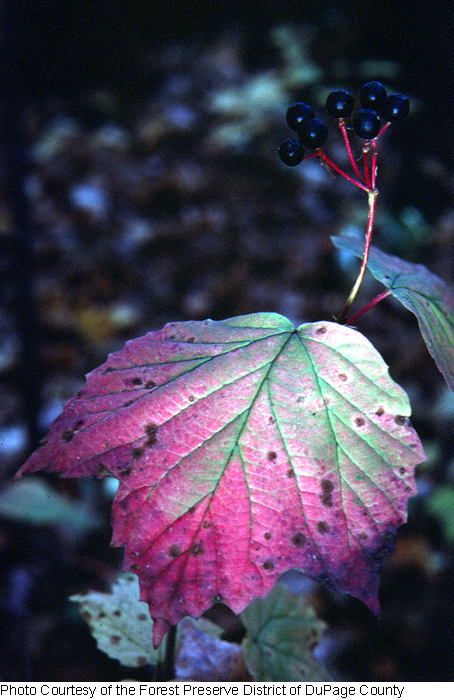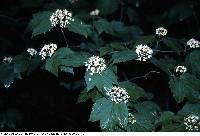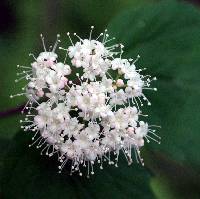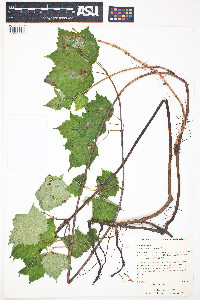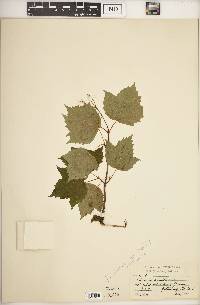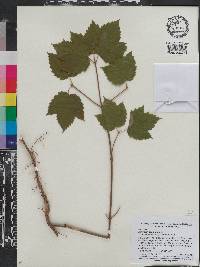Shrub 1 - 2 m tall
Leaves: opposite, stalked, 6 - 12 cm long, somewhat orbicular to egg-shaped with a rounded to heart-shaped base and pointed lobes, three-lobed, maple-like, coarsely toothed, palmately veined, slightly hairy above, finely hairy beneath with black dots. Leaf stalks 1 - 2 cm long, finely hairy. Leaves turning reddish purple in autumn.
Flowers: in branched clusters (cymes). Cymes mostly seven-rayed, long-stalked, flat-topped, 3 - 5 cm wide, finely hairy. Corolla five-lobed, white, 4 - 5 mm wide. Stamens five, white, exserted from the corolla. Filaments 3 - 4 mm long. Stigma three-lobed.
Fruit: berry-like (drupe), in clusters, purplish black, to 8 mm wide, roundish, single-seeded.
Twigs: slender, finely hairy when young.
Similar species: The variety ovatum differs by having egg-shaped leaves with remotely toothed margins. Viburnum opulus is also similar but has hairless branchlets, red mature drupes, and it lacks dots on the leaf undersides.
Flowering: late May to early July
Habitat and ecology: Occasional in wet to dry woods, dune slopes, and swamps.
Occurence in the Chicago region: native
Notes: About 200 species of Viburnum occur between North America, Europe and Asia. Many are ornamental shrubs cultivated for their showy flowers, autumn foliage, and attraction to wildlife.
Etymology: Viburnum is the Latin word for the Wayfaring tree. Acerifolium means "with leaves like a maple tree."
Author: The Morton Arboretum

